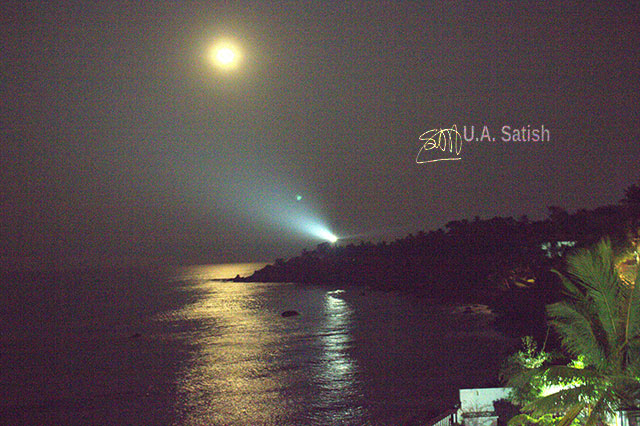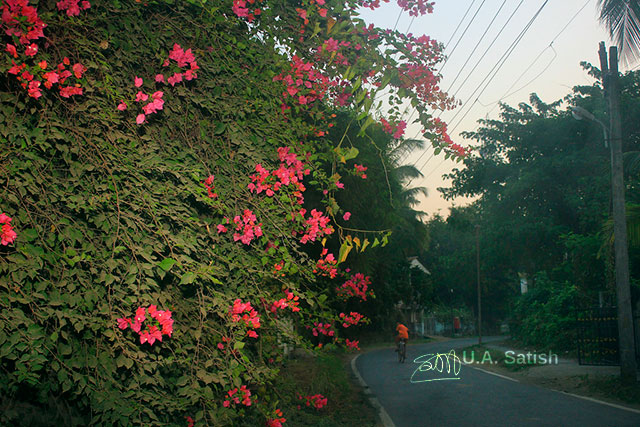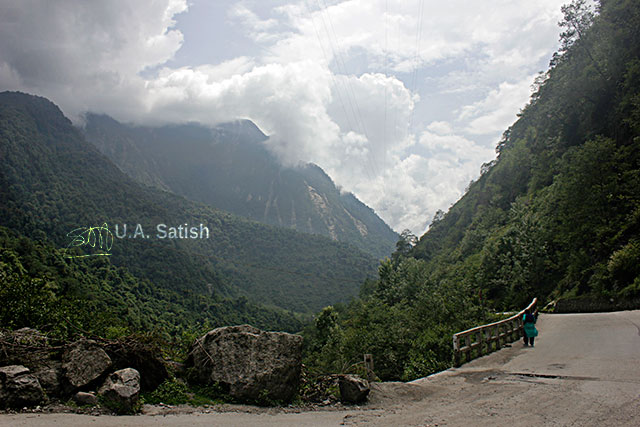
DSLR camera and point & shoot camera have their advantages and disadvantages. Here I will go through the pros and cons so that you can take the right decisions
For most people who are just getting into photography, there is a misbelief that expensive camera are needed to produce excellent photographs. This is far from the truth. I have taken quality photos with my point & shoot and phone cameras. It is the photographer who makes the image, not the camera.
Advantages of DSLR Cameras
- Better Image Quality
DSLRs have big sensors. This results in better quality, faster speeds and lesser noise.

- Control of Depth of Field
If you are shooting a landscape, you will aim to have a good depth of field. In a DSLR, you can choose a narrow aperture, say f/8.0, to get everything in focus. On the other hand if you employ a long-focus lens, the background will be out of focus.
- Fast Shutter Speeds
In sports photography, fast shutter speeds are a must to freeze motion. This is true also when you shoot birds who are constantly on the move. DSLRs offer very high shutter speeds which point & shoot cameras do not match.
- Big ISO Range
DSLR cameras provide a wide array of ISO settings that lend itself to shooting in diverse conditions.
- Manual Control
You can control everything in DSLR, from ISO to focal points. You can also quickly change settings if called for.
- Choice of Different Lenses
A wide range of lenses are available in DSLRs to adapt to countless situations. The lenses range from wide angle to super long focal lengths.
Disadvantages of DSLRs
- High Price
Even entry level DSLRs cost more than high end point & shoot cameras. Addition of lenses will increase the cost burden.

- Size and Weight
The cameras are heavy and bulky. A DSLR camera kit bag can weigh 3-4 kg. The weight also makes it tough to hold the camera still.
- Complexity
The learning curve can be steep. The settings and controls on the professional cameras are complex and can be overwhelming.
Advantages of Point & Shoot Cameras
- Size and Weight
Most point & shot camera are small and light weight. They can be easily slipped into your pocket. And this makes them somewhat inconspicuous. Moreover some of the new mobile phones have great cameras and so you may not even need the faithful point & shoot camera.
- Price
In general, point & shoot cameras are affordable. But the top end of the range is likely to cost as much as the cheaper DSLR.
- Fixed Lens
All point & shoot camera are fitted with a single lens. Hence there is no need to change lenses.
- Big Depth of Field
Small sensors have greater depth of field and small cameras have short focal lengths. In general terms, this means that point & shoot cameras usually have a big depth of field. They tend to bring everything in focus and make the whole frame look sharp. This can be good as well as bad.
Disadvantages of Point & Shoot Cameras
- Image Quality
Due to the small sensors, the image quality in point & shoot cameras is below that of DSLRs.
- Lack of Flexibility
Point & shoot cameras are not upgradable. You cannot change their lenses or add external flash units.
- Night Photography
Night photography results in blurred photos. In low light conditions, a point & shoot camera raises the sensitivity of the sensor (ISO). The outcome is grainy pictures.
- Limited Manual Mode
In many point & shoot cameras, there is very limited control over aperture and shutter speed.

Should You Buy a DSLR or a Point & Shoot Camera?
If you want a portable camera that takes good pictures and if you shoot mainly in Auto mode, a point & shoot camera is the answer for you.
However if you have a serious interest in photography, buy an entry level DSLR. As you go up the learning curve, you can consider upgrading to professional models.
If you liked the post, you could…
Join more than 5,000 fans of UASATISH by liking us on Facebook, or follow us on Twitter and Instagram.
Related Post: